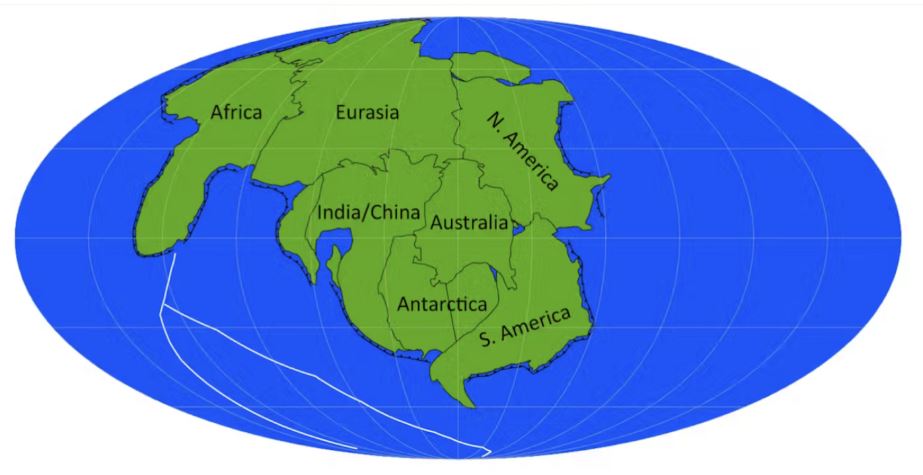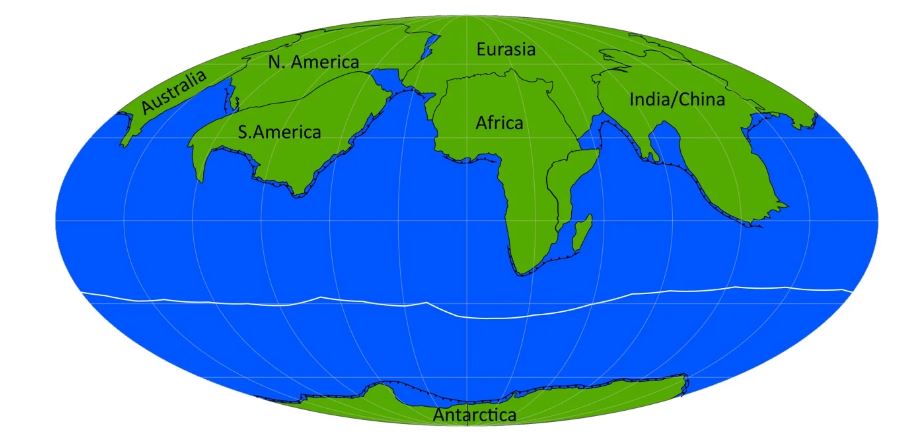From a global time perspective, the Earth is destined to undergo massive transformations. About 200 million years ago, the supercontinent Pangea, a vast expanse of unified land, dominated the horizon. Over time, land areas fragmented and changed, sculpting the diverse landscapes we know today. However, continental drift is an ongoing process, and according to advanced computer simulations, about 250 million years from now, a new supercontinent could emerge from the depths of the existing oceans and continents.
“We could end up with a scenario very similar to that of Pangea in the age of dinosaurs,” Hannah Davies, a geoscientist at the GFZ German Research Center for Geosciences, expressed this possibility to Mashable. The movement of continents is an indisputable fact, and is supported by geological evidence, such as rocks, fossils, and the composition of the continents themselves. However, the exact path of this geological development remains shrouded in mystery, although technological progress makes it possible to envision the Earth's geological future more clearly.

Damian Nance, professor emeritus of geology at Ohio University, shares this view: “I have no doubt that we will witness the birth of a new supercontinent, but many uncertainties remain about its timing and appearance.”
Theories about possible future supercontinents are diverse and fascinating. It is possible that “Eureka” forms near the equator, while in “Amasia” the continents move north, with Antarctica remaining almost stationary. In Novopangea, the current configuration of the continents remains, with the Atlantic Ocean expanding and the Pacific Ocean closing. Finally, Pangea Ultima presents a tropical configuration where the continents are clustered around a stagnant Atlantic Ocean.

A recent study using supercomputers modeled the climate on a supercontinent like Pangea Ultima, predicting inhospitable surface conditions due to increased volcanic activity, extreme heat in the tropics, and a lack of marine cooling in the scorching interior.
Nance reflects on the barren desert conditions in the interior of ancient Pangea, describing them as “absolutely horrific.” However, these geological ordeals led to an impressive biological boom, with life forms emerging and dominating the planet, including dinosaurs and mammals.
Today's continents are driven by the mantle cycle, a thick zone of semi-solid rock that moves the continents like hot fluid in a lava lamp. “The supercontinent cycle is a constant dance of convergence, separation, and convergence again,” says Davies.
Nance points out that geologists are one step closer to unlocking the secrets of the Earth's mantle, which are key to predicting the next stage of continental drift. “This will not only help predict the next supercontinent, but will also help understand how the Earth works,” he adds.
The question remains whether human civilizations will exist to witness these massive changes. With only 12,000 years of existence, compared to 165 million years for dinosaurs, this is unguessable. Davies considers the possibility of humanity still being alive about 250 million years from now, suggesting that if we were, we would have evolved significantly.
These giant time perspectives are truly impressive. However, the evolutionary path of species, including humans, remains an interesting puzzle in this ongoing dance of the Earth through time and space.

:strip_icc()/i.s3.glbimg.com/v1/AUTH_e7c91519bbbb4fadb4e509085746275d/internal_photos/bs/2024/h/T/QtNBnkSxS1suktkzfMnw/captura-de-tela-2024-02-09-as-06.33.12.png)